The garrison period began with the arrival of the newly established Fusilier Battalion of the 3rd Hessian Infantry Regiment in Arolsen and Mengeringhausen in 1867.
Only now did construction of a barracks begin at the intersection of Große Allee and the unpaved road to Mengeringhausen, which was completed in 1870.
After 1871, a variety of new buildings, conversions and extensions followed.
On August 1, 1897, barracks B was officially taken over in the immediate vicinity of the courtyard entrance,
on September 30th at the officers’ mess on the northbound lane of Große Alle and
on July 4, 1908 of the staff building at the main entrance to the parade ground. In addition, a hospital was built on the eastern side of the unpaved road to Mengeringhausen, which was later called “Kasernenstraße”.
The battalion stood in Arolsen for 43 years until it was bid farewell by the royal family on the parade ground on the afternoon of August 2, 1914. 105 officers. 220 non-commissioned officers and 1,781 men lost their lives during the World War.
On November 29, 1918, the “Wittich Infantry Regiment No. 83” was disbanded, which meant that the garrison period in Arolsen ended.
This was followed by 15 years of civilian use of the barracks area.
(Bernd Joachim Zimmer, code name Arthur – The concentration camp external command in the SS leader school Arolsen, Verlag Gesamthochschul-bibliothek Kassel, 1994, pp. 17 – 19)
In March 1933, a Voluntary Labor Service camp was set up in parts of the barracks. In June 1933 this was moved out of the barracks again and an “SA relief organization” moved in; The SA then took over the entire area for its “SA sports school” at the end of November 1933.
The rental agreement was then terminated by the city on March 18, 1935.
(Bernd Joachim Zimmer, code name Arthur – The concentration camp external command in the SS leader school Arolsen, Verlag Gesamthochschul-bibliothek Kassel, 1994, pp. 21-22)
On April 20, 1935, the formation of the 2nd Sturmbanne of the 2nd Standard of the SS-Verfügungstruppe began under the former World War officer, Walter Krüger.
(Bernd Joachim Zimmer, code name Arthur – The concentration camp external command in the SS leader school Arolsen, Verlag Gesamthochschul-bibliothek Kassel, 1994, p. 23, further details on the following pages)
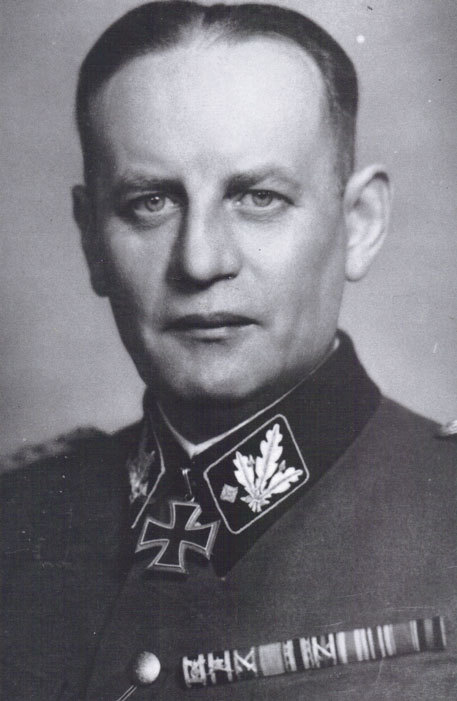
On September 5, 1935, the groundbreaking ceremony took place for the construction of new supply buildings for the SS barracks.
(Bernd Joachim Zimmer, code name Arthur – The concentration camp external command in the SS leader school Arolsen, Verlag Gesamthochschul-bibliothek Kassel, 1994, p. 77)
On October 1, 1936, the Sturmbann was officially converted into the “Germania” standard.
(Bernd Joachim Zimmer, code name Arthur – The concentration camp external command in the SS leader school Arolsen, Verlag Gesamthochschul-bibliothek Kassel, 1994, p. 29)
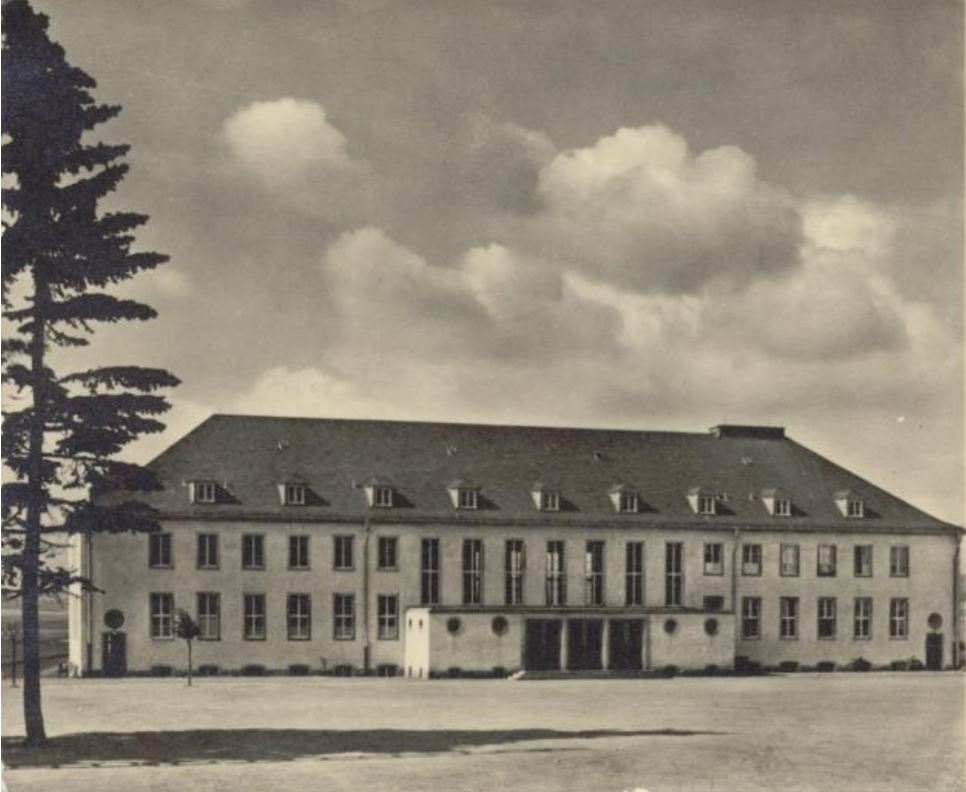
On August 17, 1939, the II Sturmbann “Germania” left the barracks as part of the mobilization plan.
During the Polish campaign the barracks were largely empty.
At the turn of the year 1939/40, the barracks was briefly occupied by various SS units (which one?), before an infantry regiment of the SS Totenkopf Division waited in quarters in the Nordwaldeck area to receive further marching orders for the attack in the west.
(Bernd Joachim Zimmer, code name Arthur – The concentration camp external command in the SS leader school Arolsen, Verlag Gesamthochschul-bibliothek Kassel, 1994, p. 45)
Unfortunately, this information cannot be verified.
Between March 7 and 10, 1940, the SS Totenkopf Division was relocated from the Münsingen military training area to the Brilon – Frankenberg – Korbach – Arolsen – Niedermarsberg area. The SS T. Artillery Regiment and its staff are said to have been housed in Arolsen.
(Wolfgang Vopersal, Soldiers, Fighters, Comrades, Volume 1, pp. 60, 63)
On Friday, March 21, 1940, the needy parts of the population in Arolsen were fed from the field kitchen of the SS-T.-Art.Regiment. To mark the occasion, the band is giving a concert (p. 81)
The T.-Art.Rgt conducted a sharpshooting event on the Tr.Üb.Pl. from April 15th to 19th, 1940. Schwarzenborn through. (p. 79)
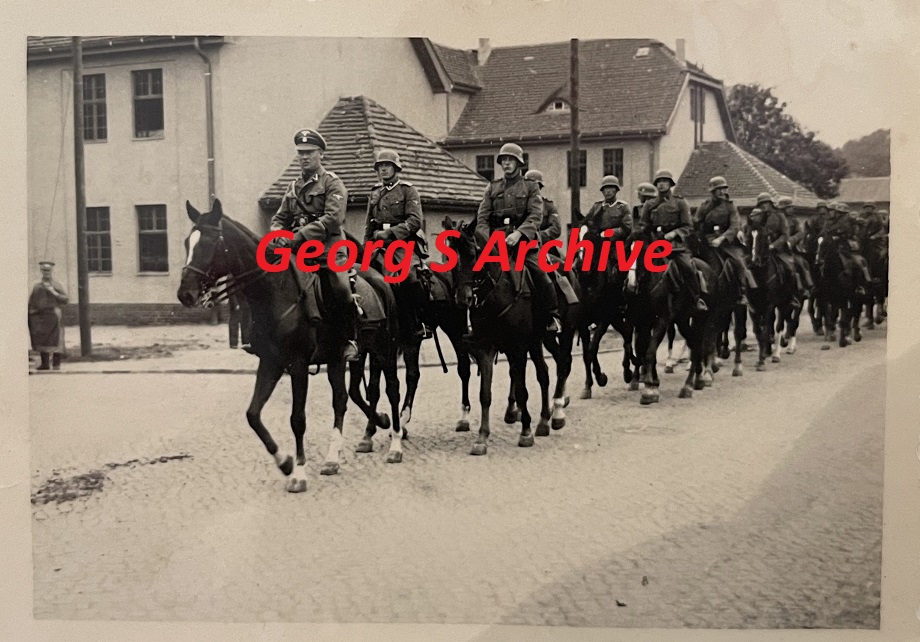
On the night of May 12th to 13th, 1940, the SS-T Division was brought forward as an OKH reserve in the area northeast of Cologne. (p. 85)
If so, then parts of the T-Div. from 10.3. – May 12, 1940 in Arolsen. No further information is available.
December 22, 1939
On December 22nd, 1939, the SS-Pz.Abw.Ers.Kp moved from Ellwangen to Arolsen, to the former location of the II./”Germania” (WV, M. v.Dijken from April 30th, 2006)
In the spring of 1940, the SS-Totenkopf-Panzer-Jäger-Ersatz-Company was moved to the Arols SS accommodation for a few months.
(Bernd Joachim Zimmer, code name Arthur – The concentration camp external command in the SS leader school Arolsen, Verlag Gesamthochschul-bibliothek Kassel, 1994, p. 45)
February 00, 1940
In connection with the formation of the SS-T-Div, on the instructions of the OKH v. October 27, 1939
“1 Inf.Pz.Abw.Ers.Kp. according to KStN 6045 BC 10/1/1937”
as a replacement unit for Pz.Abw.Kompanien of the SS-TIR 1 – 3 of the SS-T-Div. ordered. The designation was SS-T-Pz.Abw.Ers.Kompanie
With orders dated January 9th and January 23rd, 1940, the Army High Command/Chief of Army Armaments and Commander of the Reserve Army approved, among other things, the establishment of this company as the responsible replacement unit for the anti-tank companies of the SS-T.-Infanterie-Regimnter 1 to 3 and of the SS-T.-PzAbw.abteilung.
The formation took place on December 19, 1939 in Prettin on the Elbe, near Torgau, -Lichtenburg under SS-Hstuf. List primarily consists of reservists (members of the police reinforcements). Among them is the later commander of the SS-PzJgAbt 6, Dr. Nestler, who joined the army as a corporal when the war broke out and has now been transferred to the company.
The platoon commander in the company is, among others, the SS-Ostuf. Wolf.
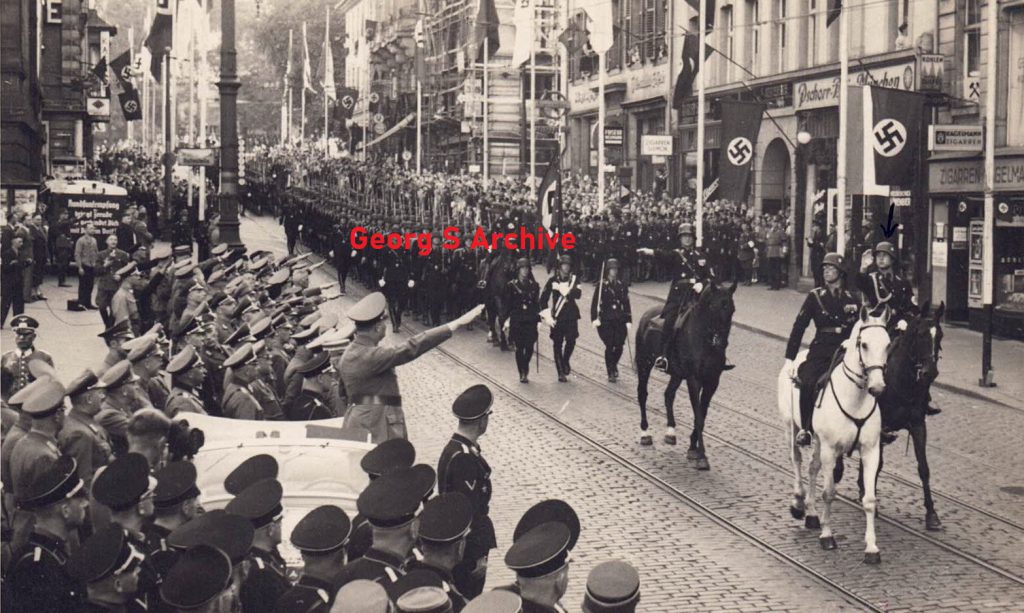
On the instructions of the Army High Command/Chief of Army Armaments and Commander of the Reserve Army from January 31, 1940, an “Inf. Pz.Abw.Ers.Kp (besp.) according to KStN 6047 of January 12, 1940” was ordered as a replacement unit “exclusively” for the police division. The company is formed in Königshütte.
At the turn of the year 1939/1940 there was an Inf.PzAbw.ErsKp. for each division of the Waffen-SS:
a) for the SS-V Division, the company (in Arolsen, SS-Ustuf. Oeck) in Munich-Freimarn, SS-Ostuf.Josef Bäurle
b) for the SS T. Division, the company in Prettin, SS-Hstuf. Cunning
c) for the police division, the company in Königshütte.
In the meantime, the order has been issued to combine the existing PzAbw.Ers.Kompanien of the SS-Verfügungs- and SS-T-Division into an SS-Panzer-Abwehr-substitute department based in Arolsen. This happened with effect from December 22, 1939, but actually only in January 1940.
At the same time, the previous SS-PzAbw.ErsKp./SS-VT, which was already stationed in Arolsen, was renamed “1./SS-PzAbw.-Ers.Kp.” renamed.
(Lt. W. Vopersal: In the course of expanding the department, parts of the 3./SS-Inf.Ers.Btl. “Deutschland” moved from Munich to Arolsen at the beginning of 1940. After the men released from the hospitals were brought in from the PzAbw. units of the SS-VT are formed here under the leadership of SS-Ostuf. Bäuerle the 3./SS-PzAbw.Ers.Abt., according to M.v.Dijken from April 30, 2006 incorrect)
At the beginning of February 1940, an advance party of around 25 men from the SS-T.-PzAbw.ErsKp also arrived. from Prettin in Arolsen. SS-Hstuf follows a little later. List with the rest of his company, which now becomes “2./ SS-PzAbw.ErsAbt”. In part of the official documents, however, this company continued to be referred to as “SS-T-PzAbw.Ers.Kp” until the summer of 1940. and is also listed as such in the strength reports. (WV)
At the beginning of February 1940, in the SS barracks in Arolsen, using the already existing personnel of the SS-T-Inf.Panz.Abw.Ers.Kp. Prettin-Lichtenburg, with the formation of the replacement unit for the Pz.Abw.Kompanien of the SS-TIR 1 – 3 and the SS-T.-PzAbw.Abt of the SS-T-Div. began.
March 15, 1940
Relocation of the Pz.Abwehr-E-Kp. “Germany”, SS Ostuf. Bäuerle, as “3. Pz.Jg.E.Abt” to Arolsen.
Aufstellung der SS-Panzer-Abwehr-Ersatz-Abteilung in Arolsen mit:
Kommandeur: SS-Hstuf.Paul Herms 19.12.39 – 01.02.40
SS-Hstuf.Frimmersdorf 01.02.40 – 01.12.40
(vorher 14.bzw.15 KpGermania”,ab 1.12.40 Kdr.PzJgAbt “Wiking”)
Adjutant: SS-Ustuf. Joachim Balzer (20.03.40)- 01.04.40
SS-Ostuf.Neu 01.04.40 – (21.09.40)
1.Kompanie: SS-Ostuf.Herbert Oeck 24.10.39 -15.08.40
(ab 1.12.40 Chef 3./SS-PzJgAbt “Wiking”)
SS-Ostuf. Landwehr 15.08.40 – 13.12.40
Stabsscharführer: SS-Oscha. Schödel
Zugführer: SS-Oscha. F.A. sp. Ustuf. Albert Buck, SS-Ustuf.Rappl und SS-Ustuf. Balzer
2.Kompanie: SS-Hstuf .List 00.02.40 – 06.05.40
Zugführer: SS-Ostuf.Wolf, SS-Ustuf.Schuster,Oscha.Krause
3.Kompanie: SS-Hstuf.Bäuerle 00.01.40 – 16.10.40
Stabsscharführer: SS-Oscha.Hermann
Zugführer: SS-Ostuf. Krämer, Oscha.Graul und Lauberstein
April 1, 1940
As part of the renaming of all existing anti-tank departments of the German Wehrmacht into “tank hunter departments”, the previous SS-Pz.Abw.ErsAbt Arolsen became the name from March 16, 1940
“SS Panzerjäger Replacement Department”. (WV)
May 31, 1940
Staffing of the SS-PzJg-ErsAbt Arolsen:
Commander: SS-Stubaf. Frimmersdorf
Adjutant: SS-Ustuf. New
Administrative leader: SS-Ostuf. dimensions
Dept. doctor: SS-Ustuf.Philipp
1.PzJg-Ers.Kp.: SS-Ostuf.Oeck (not Landwehr)
First move:
2nd move:
III. Move:
2.PzJg.-ErsKp.: SS-Ostuf. Wolf (not Otto)
1st platoon: SS-Ustuf. Keyck
2nd platoon: SS-Ustuf. Rudat
III Platoon: SS-Oju. Meggl
3.PzJg-ErsKp.: SS-Ostuf. Bäurle
Stabsscharführer: SS-Oscha. Loffelhardt
1st platoon: SS-Ustuf. Cool
2nd platoon: SS-Ustuf. woodpecker
III Platoon: SS-Scharf.Gradl
Each of the existing companies has to train and provide replacements for other field units of the Waffen-SS:
a) the 1st credit for the PzJg departments of the LSSAH and the SS-Verfüg.Div.
b) the 2nd CP. for the 14th companies of the SS-T-Div, the SS-T-PzJgAbt and PzJg companies of the various SS-T-Standarten
c) the 3rd cp. for the PzJg companies of the SS-Verfüg-Division and LSSAH
The men in the individual companies also differ in appearance. While the men of the 1st Kp. on their collar tabs the SS runes that the 2nd Kp. wear the skull and crossbones, the regimental numbers 1, 2 and 3 on the collar tabs indicate that the men belong to the 3rd Kp. to the regiments “Deutschland”, “Germania” and “Der Führer”. The company members of the 3rd Kp who came from the LSSAH. can be recognized by the collar patches with the SS runes.
And something else is noteworthy: While the department as such with the 1st and 3rd Kp. are subject to the official supervision of the inspector of the replacement units when inspecting the SS-VT, the official supervision of the 2nd company as a replacement unit for the SS-T division is exercised by SS-Obergruppenführer Heißmeyer as general inspector of the ext. SS-T standards.
The 3rd Company, SS-Ostuf. Bäurle, as SS-Sturmmann Niederwald reports, is “trained in the old Prussian drill”; That meant a lot of drilling with “tapping handles” and goose-stepping. The company becomes the department’s honorary company and takes part in the public events at the Arolsen location. (WV, M.v.Dijken from April 30, 2006)
SS-Stubaf Karl Frimmersdorf was after the war reported as MIA, but the truth was that the Soviet had executed him.
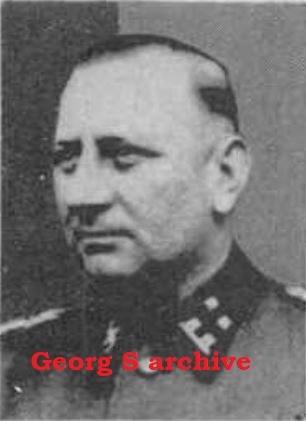
With that we end part 1 of the Story about SS-Standort Arolsen. part 2 is coming soon.
Author Roland Pfeiffer, some images Georg Schwab


